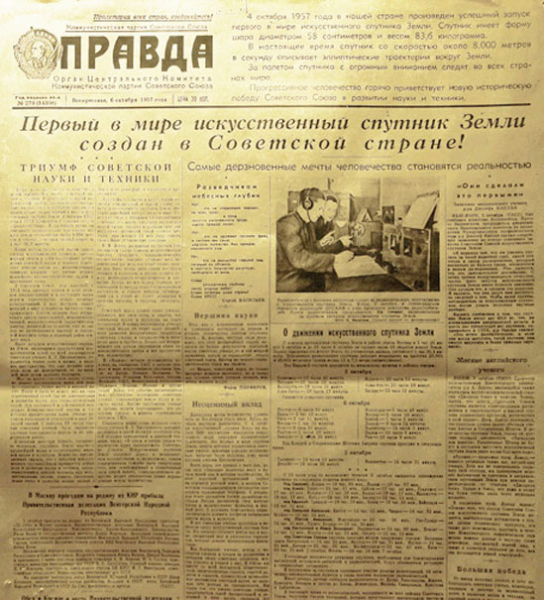
On October 4, 1957, at 10:28:34 pm (Moscow time), a rocket launched from the Tyura-Tam research site (later converted into the Baikonur Cosmodrome), delivering the first artificial Earth satellite into orbit, which opened the space age for our planet.
After the official launch announcement, millions of radio enthusiasts across the planet strained to hear the “beep-beep-beep” from space. This humble signal signaled that the path to the stars was open for humanity. What had been an impossible dream for many years was becoming a reality.
This flight was the result of a titanic effort led by Soviet scientists under Sergei Korolev. The launch had to be completed as quickly as possible, as the Americans were also preparing for a similar experiment. Without further ado, the US scientists decided to launch a spherical satellite half a meter in diameter and weighing 10-12 kilograms. The USSR approached the flight of the first satellite with a grandiose approach. Initially, it was planned to develop a satellite weighing approximately one ton. Successful launches of ballistic missiles inspired confidence that the launch vehicle developed on their basis would be capable of placing an object of such weight into orbit.
The development of a large satellite, which would house a large amount of complex equipment, was progressing slowly. Therefore, Korolev decided to simultaneously prepare for the launch of a small satellite with minimal scientific equipment, which could be developed in just a few months. All mathematical calculations for the launch of such a satellite were conducted under the supervision of M.K. Tikhonravov, and in January 1957, Korolev prepared a memorandum to the government justifying the development of two satellites: one weighing 40-50 kilograms for the first launch and the other weighing 1,200 kilograms for large-scale scientific research.
The small satellite was referred to in documents as “PS,” which stands for “P”—first or simplest—and even its creators disagreed. It didn't really matter, since everyone on Earth soon called it “the First.” Since the scientific “inside” of the first satellite was relatively simple, it was developed quickly. It was spherical, 580 mm in diameter, and weighed 83.6 kg. It housed four antennas, ensuring reliable signal transmission no matter the satellite's orientation. A radio transmitter with a power of just 1 watt was supposed to periodically send 0.4-second signals on 7.5 and 15 meter wavelengths (20.005 and 40.002 MHz), alternating. A power supply of three silver-zinc batteries was supposed to ensure continuous operation for two weeks. Inside the satellite, filled with nitrogen, a fan and a thermostat were supposed to maintain a temperature of 20-30° C.
Problems arose with the launch vehicle's preparation. The first launches of the rocket, designated “R-7” in documents, were unsuccessful. Modifications were carried out right at the test site under Korolev's supervision. Finally, on August 21st, to the delight of everyone present, the launch was successful. Korolev concluded: “Now the rocket must and will fly!” Preparations began for the launch vehicle, designated “8K71PS,” to launch the first satellite into orbit.
On October 4, 1957, the rocket, weighing 267 tons, came to a halt at launch. Eyewitnesses recalled the excitement was universal, as this was only the rocket's fifth launch, and any surprises were still possible. But nothing unexpected occurred. A fiery torch shot skyward, and 315 seconds after liftoff, the first artificial satellite separated from the launch vehicle, and a triumphant “beep-beep-beep” sounded over the planet. A new era had begun for humanity—the era of space exploration.
The first satellite orbited the Earth in an elliptical orbit (perigee 228 km, apogee 947 km), completing one orbit every 96 minutes and 10 seconds. Amazingly, it “lived” in orbit for 92 days, orbiting the Earth 1,440 times, and transmitted signals from space for 21 of those days.
Nowadays, news of satellite launches and even the flights of cosmonauts and astronauts passes unnoticed in the din of global news. Back then, the flight of the first satellite was the top story for all the world's news agencies for several days, and on clear nights, people poured out into the streets to try to spot the barely visible little star in the sky, the time of its passage over cities announced in advance by newspapers and radio. It was from this time that the Russian word “sputnik” (satellite) became a permanent fixture in the languages of peoples around the world.






